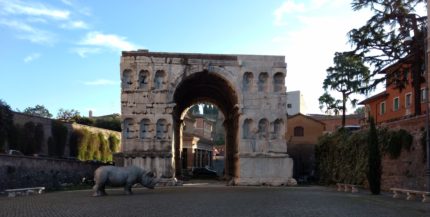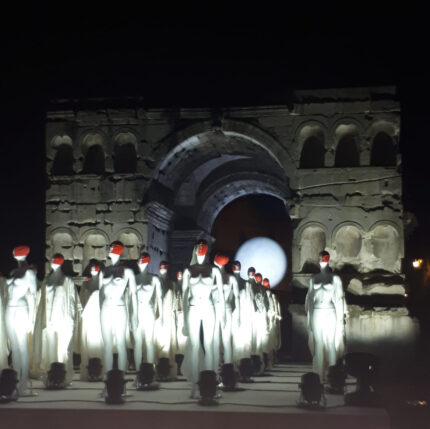Three years after my random encounter with a very life-like rhinocerous in front of the Arch of Janus, Rome’s only surviving quadrifons arch, I can now explain its presence. It was both promotional and symbolic. Dubbed the Rhinoceros at Saepta, the resin white rhinoceros was an art installation by Raffaele Curi announcing the opening of the restored Palazzo Rhinoceros, an early 20th century building housing the new art gallery of the Fondazione Alda Fendi – Esperimenti on the ground floor and a boutique hotel in the storeys above it. The rhino symbolized the ethos of The Fondazione, its Gallery and the refurbished Palazzo.
Space is always interconnected to the outdoor space, based on the principle that inspires the Philosophy of the Rhinoceros and the Fondazione Alda Fendi – Esperimenti: the perpetual juxtaposition between ancient and modern, between art indoors and outdoors, the spaces where it operates in a fruitful synergy of contaminations and interferences.
And thus the rhinoceros mystery is solved just in time to celebrate the reopening of the Arch of Janus to the public 28 years after it was fenced off when a car bomb exploded at the neighboring church of S. Giorgio in Velabro. The reopening of the arch was funded by the Fondazione Alda Fendi and the opening ceremony featured a performance staged by rhinoceros author Raffaele Curi. As of November 13th, the Arch can be visited by the public every Saturday from 10AM to 2PM and come next March, on Sundays from 4PM to 8PM, which will be extra cool because of the arch’s new lighting scheme. Admission is free.

